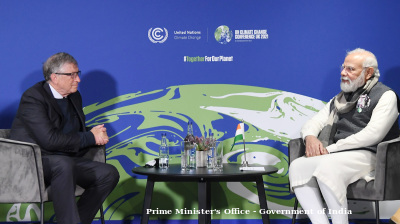Russia remains world grain production and export leader while Ukraine’s production and export tumbles

Russia has solidified its position as the world's top wheat exporter as the 2022/23 agricultural trading year comes to an end, the US Department of Agriculture (USDA) says in its latest update on July 13.
“With record production of 92.0mn tonnes, Russia's total wheat supply exceeded 100.0mn tonnes for the first time. With ample supplies, no export restriction for the entire year, and competitive prices, Russia is estimated to export 45.5mn tonnes in 2022/23. Its primary destinations are in the Middle East, North Africa, and Central Asia,” USDA said.
Russia has brought in a new all-time high record harvest of 153mn-155mn tonnes of grain, President Vladimir Putin said in March, smashing the previous record of 135.4mn tonnes of grain in the 2018/19 agricultural year.
The wheat harvest is expected to be a strong 85mn tonnes, according to the USDA and wheat exports to reach 47.5mn tonnes this year.
Russia's agricultural ministry upped its forecast for this year's grain harvest from 123mn tonnes to 130mn tonnes in June (chart), if the weather is good.
Russia's grain silos are full to bursting following an all-time record harvest in the previous agricultural year, but sanctions restrictions on shipping mean farmers have been struggling to get their grain to the international markets and warned that $3.4bn worth of grain may rot if more transport routes out of Russia cannot be found.
And Russia should be able to earn good money from exports after the United Nations Food and Agriculture Organization raised concerns in May that drought caused by global warming will depress this year’s harvest in France and another four of the five big grain producers.
On top of that the World Meteorological Organisation announced on July 4 that there is a 90% probability of an El Niño event in the second half of this year that will warm the surface of oceans that could have a major negative impact on things like food production and energy demand. The WMO also said this week that the world has just experienced its hottest day on record as record breaking heat waves sweep the world.
Looking ahead to the 2023/24 agricultural year, Russia's wheat crop is forecasted to be lower at 85.0mn tonnes, says USDA. However, large carry-in stocks will ensure that wheat supplies remain over 100mn tonnes for the second consecutive year. With strong import demand from key markets such as Egypt, Iran, and Algeria, Russia's wheat exports are projected to reach a new record of 47.5mn tonnes in 2023/24.
In contrast, Ukraine's wheat production in 2023/24 is forecasted to be significantly reduced due to the war with Russia. The crop is expected to reach 17.5mn tonnes, the smallest in over a decade.
With sharply reduced supplies and uncertainty surrounding the future of the Black Sea Grain Initiative, Ukraine's wheat exports for 2023/24 are forecasted to be lower at 10.5mn tonnes, down more than 40% from the pre-war average. The shift in export destinations during the war, primarily to Europe, was influenced by ease of shipment and increased demand in some EU member states due to drought.
On a global scale, the production outlook is mixed, says USDA, with smaller crops in Argentina, Canada, and the European Union offsetting larger crops in the United States and Pakistan. Global trade is forecasted to decrease slightly, with reduced exports from Argentina and Canada outweighing higher exports from Russia and Australia. Import demand is expected to decline in countries such as Pakistan, Afghanistan, Morocco, and Nigeria. Global consumption is projected to increase, mainly driven by larger feed and residual use in China. Global stocks are forecasted to decrease, particularly in China and Russia, reaching the lowest level since 2015/16.
China is playing an increasingly important role in the agricultural markets and is currently Ukraine’s biggest customer for corn in particular. While the Black Sea grain initiative has been billed as keeping supplies of grain to Africa flowing to prevent a food crisis, the reality is that very little Ukrainian grain goes to Africa and most of it is sold to China and the EU, and Ukraine’s main export is corn, not grain.
“Most of the grain that had been held up in Ukrainian silos after February 24 was corn (not wheat), contracted by international companies, not necessarily to feed people but, for example, to use as biofuel or animal food. Therefore the agreement wasn’t designed to immediately avert famine in countries like Yemen or Somalia but rather to stabilise the market and contain prices, which in turn hurt countries’ ability to purchase food,” the Wilson Centre reported.
“China's corn import sourcing has become more diversified since October 2022, marking a shift from heavily relying on the United States and Ukraine,” USDA says. “Brazil has significantly increased its market share through a surge in corn exports to China, following an agreement in May 2022 to allow imports from Brazil. This has impacted US market share due to competitive prices. Other smaller exporters have also benefited from China's efforts to diversify trade. This move reflects a broader trend among large Asian buyers, such as South Korea, Japan, and Vietnam, to mitigate risks related to food security and trade disputes.”
The need to diversify import sources of grain has been impressed on governments around the world due to trade disputes, the global COVID-19 pandemic, and the war in Ukraine. By expanding the number of countries from which to import, China is reducing unpredictability and better meeting its substantial demand for feed grains, thus enhancing its own food security.
News

Cambodia and Thailand agree peace deal
Thailand and Cambodia have agreed a peace deal to mark the end of a conflict earlier in the year as Cambodian Prime Minister Hun Manet and Thai Prime Minister Anutin Charnvirakul attended a signing ceremony overseen by US President Donald Trump.

Trump would like to meet North Korea’s Kim Jong Un during Asia trip
The prospect of renewed diplomacy between Washington and Pyongyang has lingered since Kim’s remarks last month suggesting a willingness to speak to the outside world.

Bill Gates makes surprise Indian TV debut
In a move set to spark both intrigue and curiosity, Microsoft co-founder and philanthropist Bill Gates has made a cameo appearance on Indian television, entering the iconic drama series Kyunki Saas Bhi Kabhi Bahu Thi 2.

Queen Sirikit of Thailand dies
The death of Queen Sirikit of Thailand has marked the end of an era for the Thai monarchy. According to an official statement from the Bureau of the Royal Household of Thailand, Her Majesty died at 9.21 pm on October 24.



